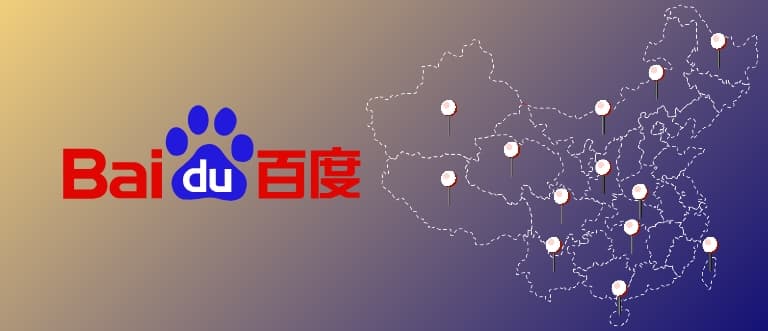Introduction
In today’s interconnected world, the success of global brands depends on how effectively they communicate across borders. A robust global PR strategy is essential for businesses aiming to reach diverse audiences, build brand loyalty, and adapt to various cultural landscapes. Crafting and executing a successful global PR strategy involves navigating unique challenges and leveraging modern tools and technologies to achieve international success.
At Wise Solutions, we understand the intricacies of global public relations. This article will provide insights into developing effective global PR strategies, overcoming associated challenges, and measuring success with the aid of advanced tools and technologies.
Challenges in Crafting Global PR Strategies
Implementing global PR strategies presents distinct challenges, particularly when striving to maintain a consistent message across diverse markets. Here are some primary obstacles global brands face:
1. Cultural Differences
Different regions have unique cultural norms and expectations that can influence how a message is perceived. What resonates in one country may not have the same impact or could even offend in another. Brands must carefully tailor their global PR strategies to respect these cultural sensitivities and adapt their messaging to each local audience. This involves understanding local traditions, values, and communication styles to ensure that the message is received positively.
For example, a brand’s humor or promotional tactics might be effective in the U.S. but may not translate well in Asian markets. Customizing your PR strategies to align with local cultural contexts can enhance your brand’s appeal and effectiveness in different regions.
2. Language Barriers
Language plays a crucial role in communication, and translating PR messages involves more than just converting words. Effective localization is necessary to ensure that the tone, humor, and emotional appeal of the message are preserved and accurately conveyed. Poor translations can lead to misunderstandings and, at worst, damage a brand’s reputation.
Global PR strategies should include professional translation services and localization experts who understand regional dialects and cultural nuances. This ensures that your messaging resonates with audiences while avoiding potential pitfalls.
3. Regulatory Compliance
Navigating diverse regulatory environments is another challenge in global PR strategies. Different regions have varying laws and regulations governing communication, advertising, and public relations. Compliance with these regulations is crucial to avoid fines, legal actions, and PR disasters, especially in highly regulated industries like healthcare and finance.
Brands must stay informed about local regulations and seek legal counsel if necessary to ensure that their global PR strategies adhere to all relevant laws. This proactive approach helps mitigate risks and maintains the integrity of your PR efforts.
Building Long-Term Relationships Through Global PR
Successful global PR is not only about delivering the right message at the right time but also about building and maintaining long-term relationships with international audiences. These relationships foster trust and loyalty, leading to sustained success in various markets.
1. Consistent Engagement
Engaging consistently with international audiences is key to keeping your brand top of mind. This requires ongoing PR efforts, such as regular press releases, social media updates, and events tailored to different regions. Long-term engagement helps create a sense of familiarity and trust with your global audience, reinforcing the brand’s presence and credibility.
2. Localized Partnerships
Partnering with local influencers, organizations, or media outlets is a valuable aspect of global PR strategies. These partnerships help brands connect with communities on a deeper level, enhancing credibility and visibility in specific regions. By forming strong local alliances, your brand can better adapt to local expectations and trends, making your global PR efforts more impactful.
3. Adapting to Evolving Markets
Global markets are dynamic, with cultural, political, and social shifts occurring regularly. To maintain strong relationships, your brand must remain agile, adjusting your messaging and strategy as needed. Regular market research and audience feedback allow you to stay relevant in a rapidly changing environment, ensuring that your global PR strategies are always aligned with current market conditions.
Tools and Technologies for Global PR
Using the right tools and technologies is essential for managing and executing successful global PR strategies. Here are some key tools that help brands streamline their PR efforts on a global scale:
1. Media Monitoring Software
Media monitoring tools like Meltwater, Cision, and Brandwatch are invaluable for tracking brand mentions across various markets. These tools provide insights into how global PR campaigns are performing, offering valuable data on audience reactions and regional trends. Analyzing this data helps brands measure success and refine their global PR strategies for better results.
2. Translation and Localization Tools
Tools such as Smartling and Transifex facilitate efficient localization by managing translations and cultural adaptations. These platforms offer high-quality translation services that go beyond simple language conversion, ensuring that messages resonate with target audiences in different regions. Incorporating these tools into your global PR strategies enhances message accuracy and effectiveness.
3. Social Media Analytics Platforms
Social media plays a critical role in global PR strategies, and platforms like Hootsuite, Sprout Social, and Buffer provide comprehensive analytics to monitor global presence. These tools help brands track engagement, audience demographics, and regional performance, allowing for optimized content tailored to different markets.
Crisis Management in Global PR
Managing a crisis on a global scale is one of the most challenging aspects of public relations. A misstep in one market can quickly escalate to others, so global PR strategies must include a comprehensive crisis management plan.
1. Proactive Planning
Having a crisis communication plan is essential for mitigating damage. This includes identifying potential risks, preparing key messages, and establishing a clear decision-making chain. A well-prepared crisis plan can prevent a local issue from becoming a global crisis, preserving your brand’s reputation.
2. Coordinated Response
During a global crisis, it is crucial to ensure consistent messaging across all regions while addressing the specific concerns of each market. This requires coordination between international PR teams to provide a timely, clear, and sensitive response to the crisis.
3. Post-Crisis Recovery
Once the immediate crisis is resolved, focus shifts to restoring trust and rebuilding reputation. Transparent communication, accountability, and positive actions, such as charitable initiatives or partnerships, are essential for regaining credibility and reconnecting with global audiences.
FAQ
1. What are the key components of a successful global PR strategy?
A successful global PR strategy involves understanding cultural differences, overcoming language barriers, ensuring regulatory compliance, and building long-term relationships with international audiences. Key components include consistent engagement, localized partnerships, and adapting to evolving markets.
2. How can a brand address cultural differences in its global PR efforts?
To address cultural differences, brands should tailor their messaging to respect local cultural norms and values. Conducting thorough market research and consulting with local experts can help ensure that PR messages are received positively and effectively.
3. What are some effective tools for managing global PR?
Effective tools for managing global PR include media monitoring software (e.g., Meltwater, Cision), translation and localization tools (e.g., Smartling, Transifex), and social media analytics platforms (e.g., Hootsuite, Sprout Social). These tools help brands track performance, manage translations, and analyze social media engagement.
4. How should a brand prepare for a global PR crisis?
Preparing for a global PR crisis involves creating a comprehensive crisis communication plan that includes identifying potential risks, preparing key messages, and establishing a clear decision-making process. Coordination among international PR teams and a consistent, sensitive response are crucial for managing crises effectively.
5. What steps can a brand take to recover from a global PR crisis?
Post-crisis recovery involves transparent communication, taking accountability, and engaging in positive actions such as charitable initiatives or partnerships. These steps help rebuild trust, restore the brand’s reputation, and reconnect with global audiences.
Conclusion
Developing and executing successful global PR strategies is vital for brands aiming to make a significant impact on the international stage. By addressing challenges like cultural differences, language barriers, and regulatory compliance, and utilizing the right tools and technologies, businesses can craft compelling messages that resonate across borders. For expert assistance in creating and implementing global PR strategies, Wise Solutions is here to help. Ready to elevate your global PR efforts? Contact Wise Solutions today for tailored strategies that drive global results. Let us assist you in crafting campaigns that make a lasting impact in diverse markets.


